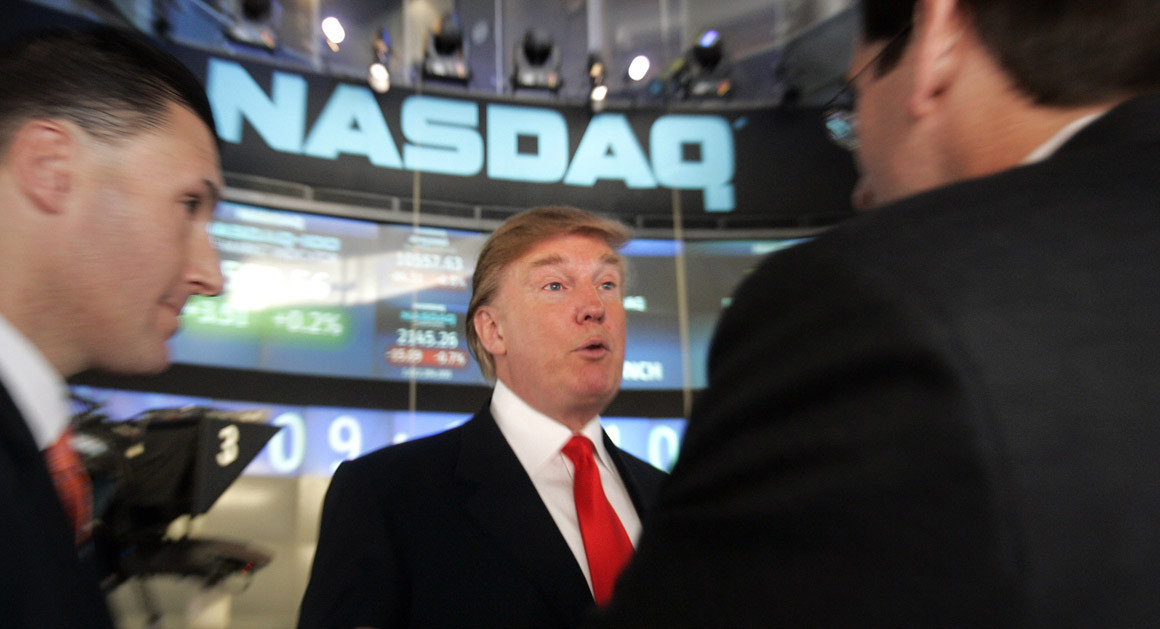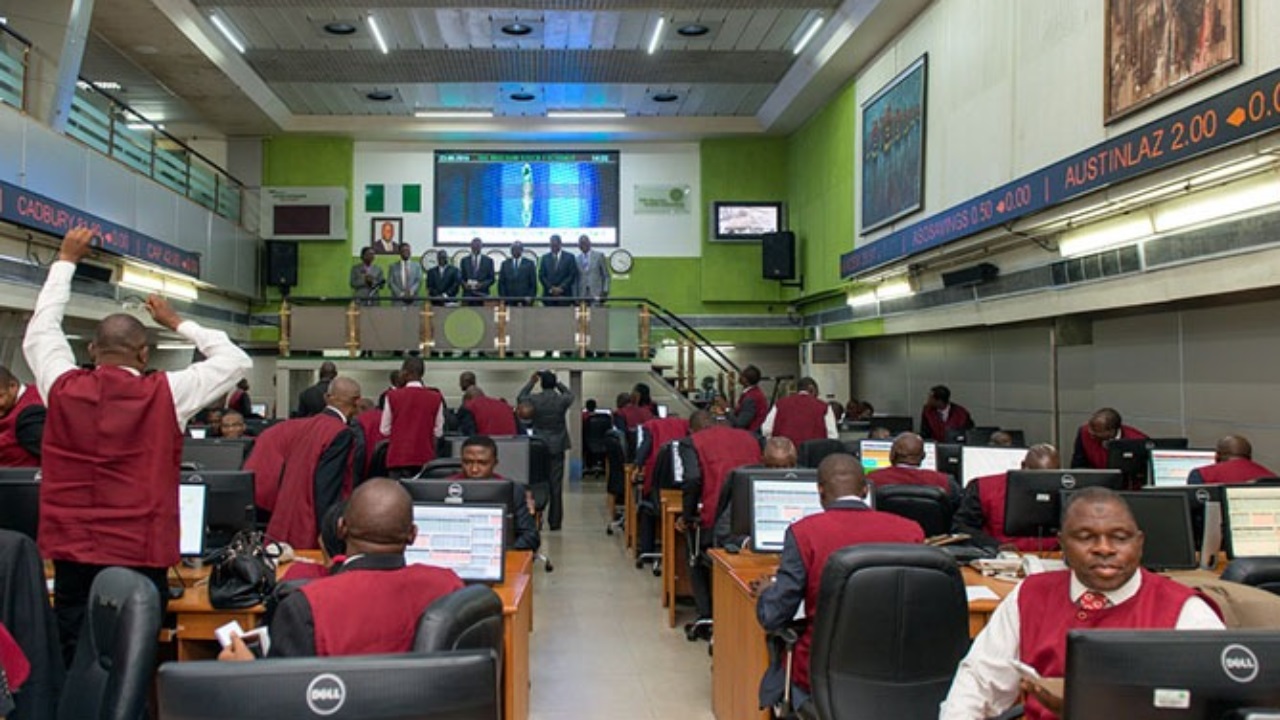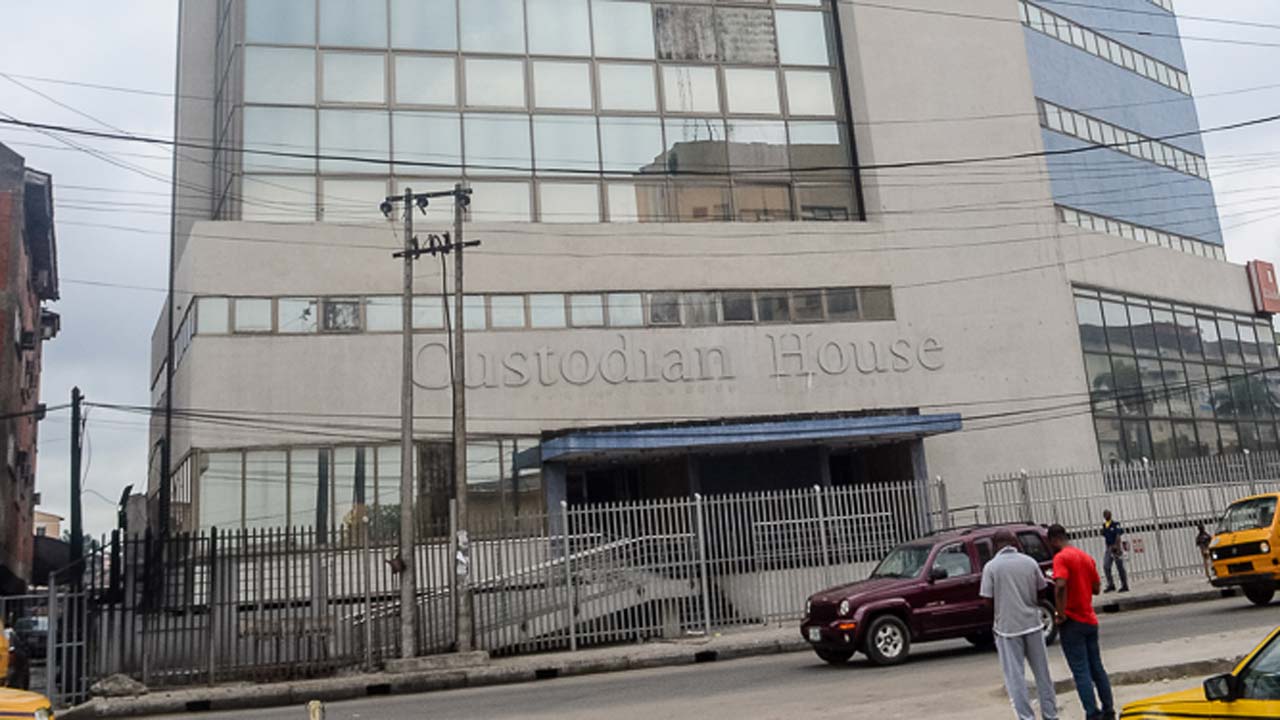Economy
Disappointing Earnings News May Weigh on Wall Street

By Investors Hub
The major U.S. index futures are pointing to a lower open on Friday, with stocks likely to move back to the downside following the rebound seen over the course of the previous session.
Semiconductor stocks may lead the markets lower amid a negative reaction to earnings news from graphics chip maker Nvidia (NVDA) and semiconductor equipment maker Applied Materials (AMAT).
Lingering concerns about the global economic outlook as well as concerns along with renewed anxiety Brexit may also weigh on the markets.
After extending a recent downward trend early in the session, stocks showed a substantial turnaround over the course of the trading session on Thursday. The major averages bounced well off their lows of the session and firmly into positive territory.
The major averages pulled back off their best levels but held on to strong gains into the close. The Dow advanced 208.77 points or 0.8 percent to 25,289.27, the Nasdaq soared 122.64 points or 1.7 percent to 7,259.03 and the S&P 500 jumped 28.62 points or 1.1 percent to 2,730.20.
The rebound on Wall Street came amid optimism about trade after a report from the Financial Times said the U.S. and China have intensified efforts to reach a trade agreement at the G20 summit later this month.
The FT said negotiators stepped up efforts following a telephone call between U.S. President Donald Trump and Chinese President Xi Jinping earlier this month.
In a post on Twitter following the call, Trump said he had a “very good” conversation with Xi with a “heavy emphasis on trade.”
The FT said China subsequently responded to U.S. requests to address a range of sticking points, with senior U.S. and Chinese officials discussing the possibility of concessions.
One person familiar with the situation told the FT that U.S. Trade Representative Robert Lighthizer had told some industry executives the next round of tariffs on Chinese imports was already on hold.
The early weakness in the markets came amid lingering concerns about the global economic outlook as well as news of the resignation of U.K. Brexit Secretary Dominic Raab.
Traders were also digesting a slew of U.S. economic data, including reports on retail sales and weekly jobless claims.
Retail sales in the U.S. increased by more than anticipated in the month of October, the Commerce Department revealed in a report.
The Commerce Department said retail sales advanced by 0.8 percent in October following a revised 0.1 percent dip in September.
Economists had expected retail sales to climb by 0.5 percent compared to the 0.1 percent uptick originally reported for the previous month.
Excluding a jump in auto sales, retail sales still rose by 0.7 percent in October after edging down by 0.1 percent in September. Ex-auto sales had been expected to increase by 0.5 percent.
Meanwhile, closely watched core retail sales, which exclude automobiles, gasoline, building materials and food services, rose by 0.3 percent in October, matching the downwardly revise increase in September.
“The plunge in oil prices in recent weeks will boost households’ real disposable incomes by close to $40 billion, with surging natural gas prices likely to offset only a small fraction of that improvement in purchasing power,” said Michael Pearce, Senior U.S. Economist at Capital Economics.
“With consumer confidence still high, much of this extra cash is likely to filter through to spending on other goods and services,” he added. “But we doubt that will be enough to replace the boost from the earlier fiscal stimulus or offset all of the headwind from tighter monetary policy.”
A separate report from the Labor Department showed a slight increase in first-time claims for U.S. unemployment benefits in the week ended November 10th.
The report said initial jobless claims inched up to 216,000, an increase of 2,000 from the previous week’s unrevised level of 214,000. Economists had expected jobless claims to edge down to 212,000.
The Labor Department also released a report showing import and export prices both rose by more than expected in the month of October.
The Labor Department said import prices climbed by 0.5 percent in October after rising by a downwardly revised 0.2 in September.
Economists had expected import prices to inch up by 0.1 percent compared to the 0.5 percent increase originally reported for the previous month.
The report also said export prices rose by 0.4 percent in October after coming in unchanged in September. Export prices had also been expected to tick up by 0.1 percent.
Reports released by the Federal Reserve Banks of New York and Philadelphia showed mixed readings on the pace of growth in regional manufacturing activity in the month of November.
Semiconductor stocks moved sharply higher over the course of the session, driving the Philadelphia Semiconductor Index up by 3.3 percent.
Significant strength also emerged among biotechnology stocks, as reflected by the 2.9 percent jump by the NYSE Arca Biotechnology Index. The index rebounded after ending the previous session at a seven-month closing low.
Gold stocks extended yesterday’s rally amid a continued increase by the price of the precious metal, with the NYSE Arca Gold Bugs Index surging up by 2.1 percent.
Software, steel, networking and banking stocks also moved notably higher on the day, while considerable weakness remained visible among interest rate-sensitive utilities and housing stocks.
Economy
Naira Crashes to N1,464/$1 at Official Market, N1,485/$1 at Black Market

By Adedapo Adesanya
It was not a good day for the Nigerian Naira at the two major foreign exchange (FX) market on Friday as it suffered a heavy loss against the United States Dollar at the close of transactions.
In the black market segment, the Naira weakened against its American counterpart yesterday by N10 to quote at N1,485/$1, in contrast to the N1,475/$1 it was traded a day earlier, and at the GTBank forex counter, it depreciated by N2 to settle at N1,467/$1 versus Thursday’s closing price of N1,465/$1.
In the Nigerian Autonomous Foreign Exchange Market (NAFEX) window, which is also the official market, the nation’s legal tender crashed against the greenback by N6.65 or 0.46 per cent to close at N1,464.49/$1 compared with the preceding session’s rate of N1,457.84/$1.
In the same vein, the local currency tumbled against the Euro in the spot market by N2.25 to sell for N1,714.63/€1 compared with the previous day’s N1,712.38/€1, but appreciated against the Pound Sterling by 73 Kobo to finish at N1,957.30/£1 compared with the N1,958.03/£1 it was traded in the preceding session.
The market continues to face seasonal pressure even as the Central Bank of Nigeria (CBN) is still conducting FX intervention sales, which have significantly reduced but not remove pressure from the Naira. Also, there seems to be reduced supply from exporters, foreign portfolio investors and non-bank corporate inflows.
President Bola Tinubu on Friday presented the government’s N58.47 trillion budget plan aimed at consolidating economic reforms and boosting growth.
The budget is based on a projected crude oil price of $64.85 a barrel and includes a target oil output of 1.84 million barrels a day. It also projects an exchange rate of N1,400 to the Dollar.
President Tinubu said inflation had plunged to an annual rate of 14.45 per cent in November from 24.23 per cent in March, while foreign reserves had surged to a seven-year high of $47 billion.
Meanwhile, the cryptocurrency market was dominated by the bulls but it continues to face increased pressure after million in liquidations in previous session over accelerating declines, with Dogecoin (DOGE) recovering 4.2 per cent to trade at $0.1309.
Further, Ripple (XRP) appreciated by 3.9 per cent to $1.90, Cardano (ADA) rose by 3.5 per cent to $0.3728, Solana (SOL) jumped by 3.4 per cent to $126.23, Ethereum (ETH) climbed by 2.9 per cent to $2,982.42, Binance Coin (BNB) gained 2.0 per cent to sell for $853.06, Bitcoin (BTC) improved by 1.7 per cent to $88,281.21, and Litecoin (LTC) soared by 1.2 per cent to $76.50, while the US Dollar Tether (USDT) and the US Dollar Coin (USDC) traded flat at $1.00 each.
Economy
Crude Oil Prices Climb as US Blocks Venezuelan Tankers

By Adedapo Adesanya
Crude oil prices edged up on possible disruptions from a US blockade of Venezuelan tankers as the market waits for news about a possible Russia-Ukraine peace deal.
Brent futures rose 65 cents or 1.1 per cent to $60.47 per barrel while the US West Texas Intermediate (WTI) futures expanded by 51 cents or 0.9 per cent to $56.66 per barrel. Both Brent and WTI were down about 1 per cent this week after both crude benchmarks fell about 4 per cent last week.
US President Donald Trump said he was leaving the possibility of war with Venezuela on the table, noting that there would be additional seizures of oil tankers near Venezuelan waters after the US seized a sanctioned oil tanker off the coast of Venezuela last week.
The American President this week ordered a “blockade” of all sanctioned oil tankers entering and leaving Venezuela, in the US’ latest move to increase pressure on Nicolas Maduro’s government, targeting its main source of income. The pressure campaign on President Maduro has included a ramped-up military presence in the region and more than two dozen military strikes on vessels in the Pacific Ocean and Caribbean Sea near Venezuela, which have killed at least 90 people.
President Trump has also previously said that US land strikes on the South American country will soon start.
Meanwhile, US Secretary of State Marco Rubio on Friday said that the US is not concerned about an escalation with Russia when it comes to Venezuela, as the Trump administration builds up military forces in the Caribbean.
This development comes as President Trump seeks an end to the unending war between Ukraine and Russia that is heading towards its fourth year.
European Union leaders decided on Friday to borrow cash to loan 90 billion Euros to Ukraine to fund its defense against Russia for the next two years as Russian President Vladimir Putin offered no compromise on Friday on his terms for ending the war in Ukraine and accused the European Union of attempting “daylight robbery” of Russian assets.
Ukraine, meanwhile, struck a Russian “shadow fleet” oil tanker in the Mediterranean Sea with aerial drones for the first time.
Earlier this week, the US and Ukraine both signaled progress in negotiations about a peace agreement during talks in German capital city of Berlin. The US is now reportedly offering Ukraine security guarantees modeled on NATO’s Article 5 mutual defense pledge.
Economy
Tinubu Presents N58.47trn Budget for 2026 to National Assembly

By Adedapo Adesanya
President Bola Tinubu on Friday presented a budget proposal of N58.47 trillion for the 2026 fiscal year titled Budget of Consolidation, Renewed Resilience and Shared Prosperity to a joint session of the National Assembly, with capital recurrent (non‑debt) expenditure standing at 15.25 trillion, and the capital expenditure at N26.08 trillion, while the crude oil benchmark was pegged at $64.85 per barrel.
Business Post reports that the Brent crude grade currently trades around $60 per barrel. It is also expected to trade at that level or lower next year over worries about oil glut.
At the budget presentation today, Mr Tinubu said the expected total revenue for the year is N34.33 trillion, and the proposal is anchored on a crude oil production of 1.84 million barrels per day, and an exchange rate of N1,400 to the US Dollar.
In terms of sectoral allocation, defence and security took the lion’s share with N5.41 trillion, followed by infrastructure at N3.56 trillion, education received N3.52 trillion, while health received N2.48 trillion.
Addressing the lawmakers, the President described the budget proposal as not “just accounting lines”.
“They are a statement of national priorities,” the president told the gathering. “We remain firmly committed to fiscal sustainability, debt transparency, and value‑for‑money spending.”
The presentation came at a time of heightened insecurity in parts of the country, with mass abductions and other crimes making headlines.
Outlining his government’s plan to address the challenge, President Tinubu reminded the gathering that security “remains the foundation of development”.
He said some of the measures in place to tame insecurity include the modernisation of the Armed Forces, intelligence‑driven policing and joint operations, border security, and technology‑enabled surveillance and community‑based peacebuilding and conflict prevention.
“We will invest in security with clear accountability for outcomes—because security spending must deliver security results,” the president said.
“To secure our country, our priority will remain on increasing the fighting capability of our armed forces and other security agencies by boosting personnel and procuring cutting-edge platforms and other hardware,” he added.
-

 Feature/OPED6 years ago
Feature/OPED6 years agoDavos was Different this year
-
Travel/Tourism9 years ago
Lagos Seals Western Lodge Hotel In Ikorodu
-

 Showbiz3 years ago
Showbiz3 years agoEstranged Lover Releases Videos of Empress Njamah Bathing
-

 Banking7 years ago
Banking7 years agoSort Codes of GTBank Branches in Nigeria
-

 Economy3 years ago
Economy3 years agoSubsidy Removal: CNG at N130 Per Litre Cheaper Than Petrol—IPMAN
-

 Banking3 years ago
Banking3 years agoFirst Bank Announces Planned Downtime
-

 Banking3 years ago
Banking3 years agoSort Codes of UBA Branches in Nigeria
-

 Sports3 years ago
Sports3 years agoHighest Paid Nigerian Footballer – How Much Do Nigerian Footballers Earn




















